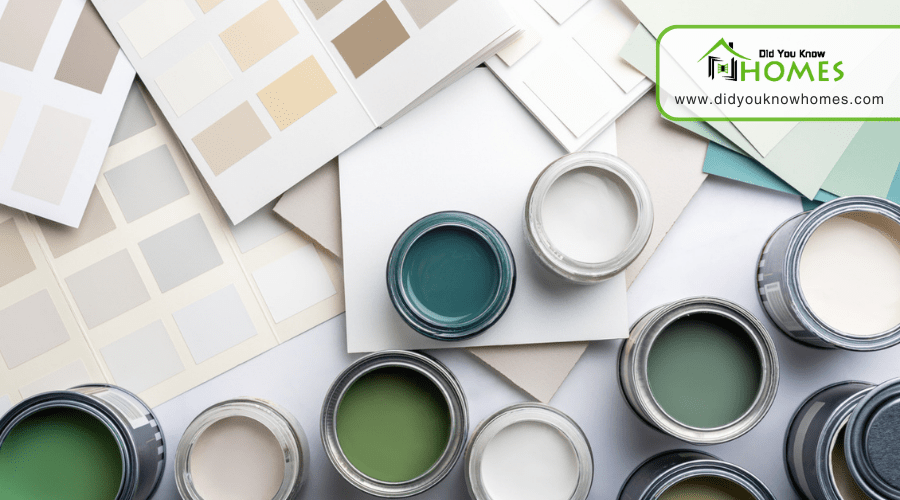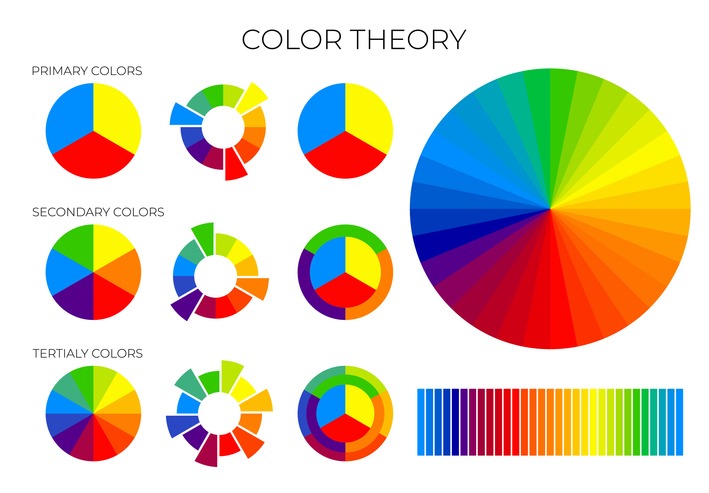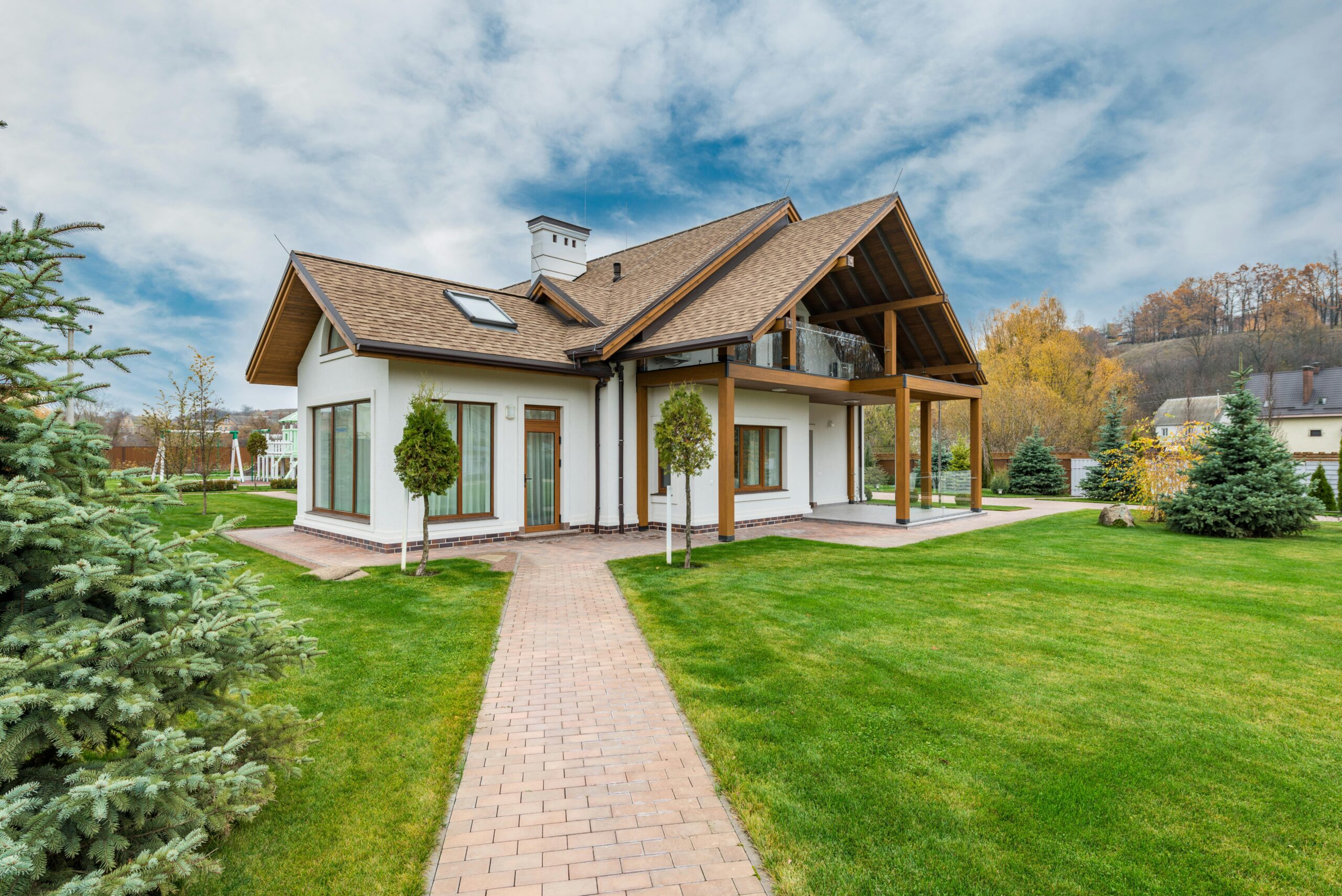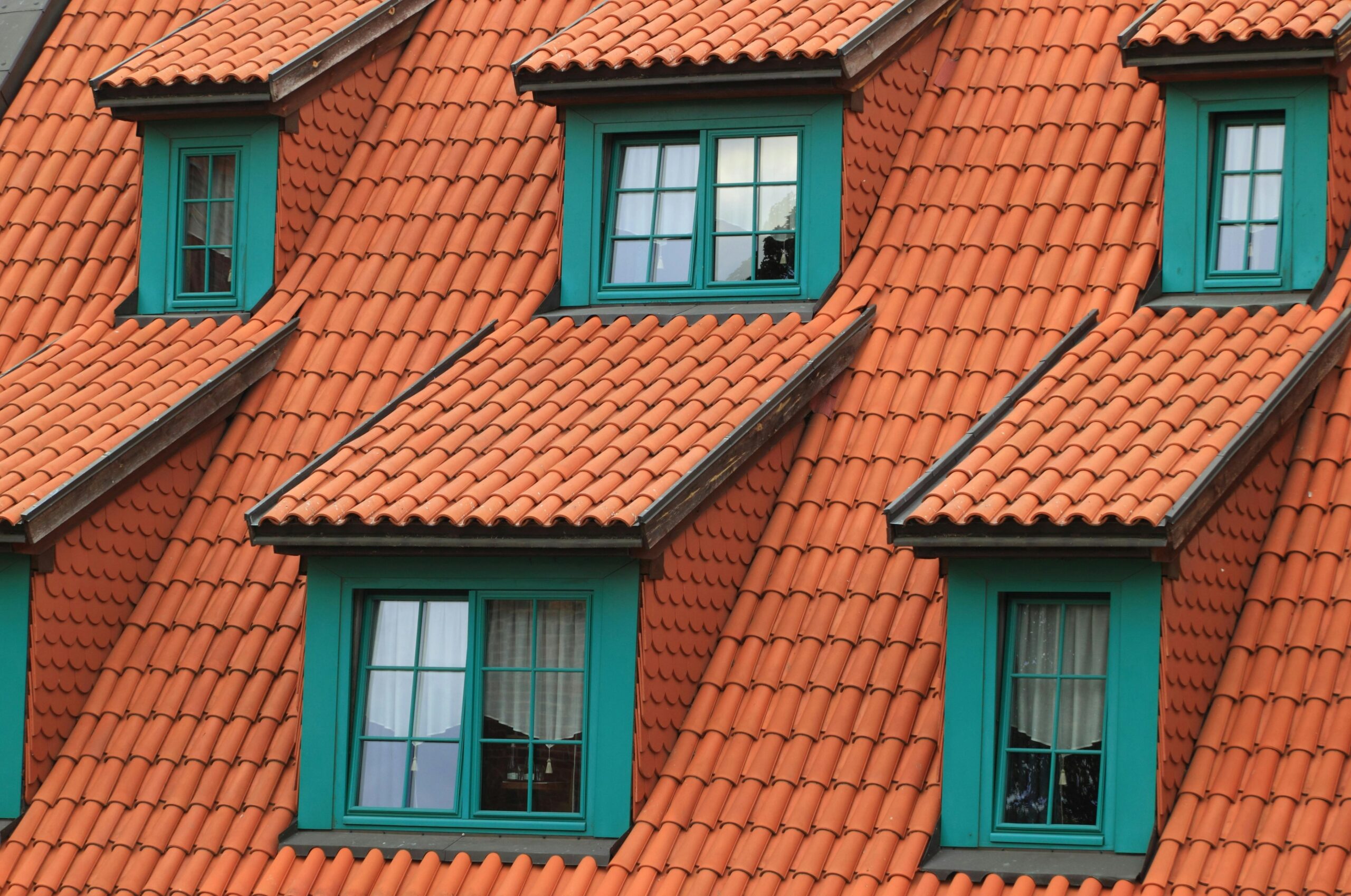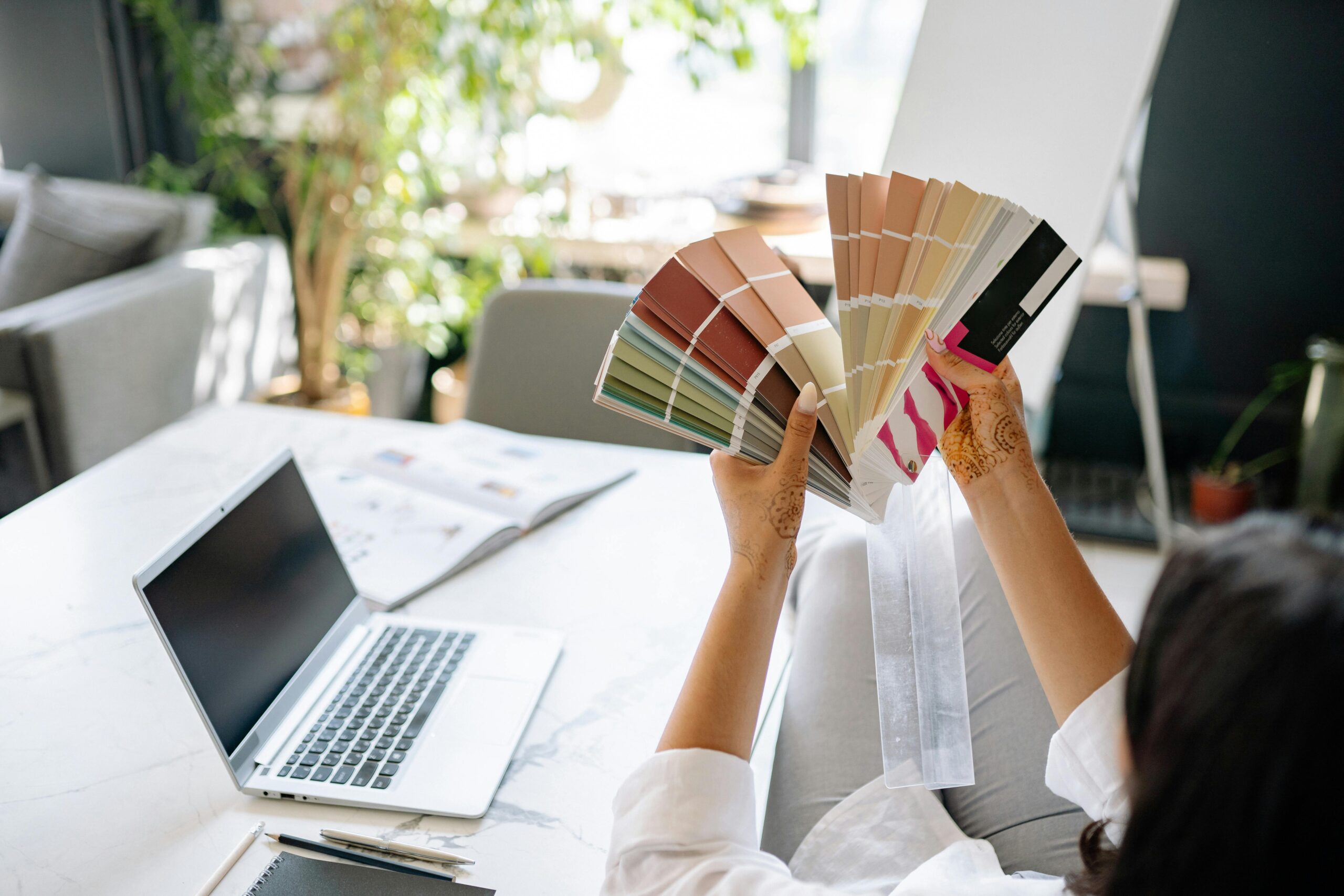Choosing the right exterior paint colors for your home is about more than just looks. Start with color theory. Warm colors add excitement, cool colors soothe. Your home’s architecture matters—let its style guide your palette. Don’t forget the roof color needs to complement your choice. Check out the landscape—use garden hues and nearby nature as inspiration. Materials matter too. Wood needs priming, brick needs breathable paint. Highlight details with contrasting trim. And don’t rush; test swatches in different lights. Want a standout home? Learn how to harmonize colors with your home’s character. A little knowledge takes your curb appeal far.
Key Takeaways
- Consider the architectural style of your home to guide your color choice, ensuring it complements the overall design.
- Analyze surrounding natural elements, like garden colors and the hues of nearby foliage, to select paint colors that harmonize with the environment.
- Ensure the chosen paint colors are compatible with your home’s exterior materials for optimal adhesion and durability.
- Use contrasting colors to highlight architectural details, such as trim, doors, and shutters, enhancing the home’s features.
- Test paint colors in different lighting conditions to see how natural and artificial light affects their appearance throughout the day and night.
Understanding Color Theory
To truly pick the perfect exterior paint for your home, understanding the fundamentals of color theory is essential. The color wheel, a key tool in this theory, is divided into 12 sections. Here’s the deal: colors sitting next to each other, known as analogous colors, work well together for a harmonious look. On the flip side, colors opposite each other, called complementary colors, create a bold contrast that can really pop.
When you’re diving into the world of exterior paint colors, think about the vibe you’re going for. Warm colors like reds, yellows, and oranges can add excitement and vibrancy to your home. They’re a hit in southern regions where folks often crave that sunny, inviting atmosphere. But maybe you’re after a more calming effect? Then cool colors like blues, purples, and greens are your go-tos, often favored for their soothing qualities in various climates.
Evaluating Home Architecture
Your home’s architectural style plays a pivotal role in guiding your exterior paint color choices. When you’re standing in front of your house, take a moment to really look at it. Each architectural style, whether it’s Victorian, Craftsman, or Modern, brings with it unique characteristics that can help you decide on the perfect hues for your exterior. It’s not just about what colors you like; it’s about what colors will enhance the beauty and integrity of your home.
Consider these points to make your choice easier:
- Architectural Style: Let the style of your home lead the way. Each style has colors that historically match or enhance its aesthetic.
- Roof Color: Make sure your paint choices complement and enhance your roof’s color and material.
- Trim Color: The size and scale of the trim, columns, and porches influence the paint colors you should choose.
- Architectural Details: Pay attention to unique elements like arches, gables, or dormers, selecting colors that highlight these features.
- Overall Integrity: Aim to maintain the architectural integrity of your home with your color choices, ensuring a cohesive and appealing look.
Analyzing Landscape Influence
Your home’s landscape provides a palette of colors that can inspire your exterior paint choice. Consider how seasonal changes impact the colors in your yard and use this to guide your selection. By taking into account plant life and the natural surroundings, you’ll guarantee your home complements its environment beautifully.
Complementing Natural Surroundings
Analyzing your home’s landscape offers a wealth of inspiration for selecting exterior paint colors that blend beautifully with your natural surroundings. By closely observing the colors of plants, the sky, trees, and other elements, you can choose hues that complement these natural surroundings. This approach guarantees your home is not only visually appealing but also harmoniously integrated with the landscape.
Consider these points for guidance:
- Look at the dominant colors in your garden.
- Notice the hues of nearby trees and foliage.
- Observe the color of the sky and bodies of water, if any.
- Think about how these colors change with light throughout the day.
- Select paint colors that echo these natural elements to create a cohesive look.
Seasonal Colors Impact
As the seasons change, so should your consideration of exterior paint colors to harmonize with the evolving landscape. Seasonal colors greatly influence your exterior paint choices, offering a spectrum of color palettes that reflect the current season’s vibe. In spring, let the vibrant greens and pastel blooms inspire fresh and lively paint colors for your home’s facade. Summer’s bright blues and lush greenery suggest bold and warm hues, perfect for a standout exterior. Come fall, the rich reds, oranges, and yellows of foliage encourage earthy tones and deep hues, making your home feel cozy and inviting. In the stark white and gray landscape of winter, cool and neutral color selections complement the seasonal aesthetic, ensuring your home remains stylish year-round. Remember, landscape influence is key when choosing seasonal colors for your exterior paint palette.
Plant Life Considerations
Consider the vibrant hues and textures of surrounding plant life to seamlessly blend your home’s exterior into the landscape. When choosing the right colors for your house, plant life considerations are essential for creating a cohesive look. Here’s how to make your home complement its natural surroundings:
- Use your garden’s color palette for paint inspiration.
- Match greenery with warm tones like earthy browns and reds.
- Let flowers inspire bright accent colors.
- Consider seasonal landscape changes to guarantee year-round appeal.
- Incorporate the textures and hues of plant life into your color scheme.
Considering Material Compatibility
Why should you pay attention to the material of your home’s exterior when selecting paint colors? It’s simple: different materials necessitate specific paint types to guarantee ideal adhesion, durability, and overall appearance. For homes with wood siding, you’ve got to contemplate priming and sealing to prevent moisture damage and make certain the paint sticks around for the long haul. Traditional homes often feature this classic material, underscoring the significance of material compatibility in your color choice process.
Brick exteriors, on the other hand, need breathable paint. This prevents moisture from getting trapped and causing damage over time, an important consideration for maintaining the integrity of brick homes. For those with stucco surfaces, keep in mind that elastomeric paint is your best friend. It’s designed to accommodate expansion and contraction without cracking, keeping your home’s exterior looking fresh.
And let’s not forget about vinyl siding. It requires specially formulated paint that can withstand weathering and maintain color vibrancy, ensuring your home stands out in the neighborhood for the right reasons. So, when picking exterior paint colors, always take into account material compatibility to make sure your home not only looks beautiful but stays protected.
Detailing Architectural Features
Highlighting your home’s architectural features with contrasting paint colors can often make them pop and give your property a unique charm. When you’re choosing exterior paint colors, don’t just think about the main hue. Consider how accent colors can bring attention to the unique aspects of your home’s design. Using contrasting colors to emphasize these details can greatly enhance your home’s curb appeal.
Here are a few tips to get you started:
- Focus on the trim: A contrasting color here can frame your home beautifully.
- Pick an accent color for the door: This creates a welcoming focal point.
- Utilize shades to highlight shutters: Contrasting colors can make windows stand out.
- Consider the architectural style: Select colors that complement the era and design of your home.
- Play with depth: Use different shades to add dimension to architectural details.
Assessing Lighting Impact
While choosing accent colors to highlight your home’s architectural features, it’s equally important to evaluate how different lighting conditions will impact the appearance of these colors. You see, lighting conditions play a significant role in how exterior paint colors are perceived. Natural light can make your selected hues look brighter and more vibrant during the day. However, as the sun moves, shadows from trees or nearby structures might change how these colors appear, potentially dulling them or shifting their tones.
Don’t forget about artificial lighting either. In the evening, your home’s exterior can take on a completely different look depending on the artificial lights you’ve selected. This can significantly change the perceived color of your home’s paint, sometimes in surprising ways.
To make sure you’re happy with your color choice at all times, test your chosen paint colors under various lighting conditions. Apply swatches in a discreet area and observe them throughout the day and night. Pay special attention to how both natural light and artificial lighting, as well as any shadows, impact the appearance. This proactive approach guarantees your home looks consistently appealing, regardless of the lighting.
Choosing Roof-Complementary Colors
Often, homeowners overlook the importance of matching their exterior paint colors with the roof, yet this step is crucial for achieving a harmonious and attractive home exterior. Selecting roof-complementary colors is not just about picking shades you like; it’s about creating a cohesive look that enhances your home’s curb appeal.
When you’re choosing an exterior paint color, keep these points in mind:
- Consider the material of your roof: Different materials have unique hues and textures that can influence your color choice.
- Look at the color of your roof: Identify whether it’s cool or warm-toned to match accordingly.
- Aim for a balanced appearance: Your home should neither clash with the roof nor be too matchy-matchy.
- Think about the overall aesthetic: The color scheme should complement the architectural style of your home.
- Remember curb appeal: Enhancing your home’s exterior with roof-complementary colors can greatly boost its attractiveness.
Setting the Right Mood
Have you ever considered how the right exterior paint colors can instantly set the mood for your home? It’s all about choosing hues that not only match the architectural style of your home but also create the atmosphere you’re longing for. Whether you own one of the many traditional homes dotting the landscape or a modern masterpiece, the color combinations you select play a pivotal role.
| Mood | Colors | Best For |
|---|---|---|
| Calm & Serene | Blues and Greens | Relaxing environments |
| Lively & Warm | Reds and Oranges | Inviting, energetic spaces |
| Balanced | Complementary Color Schemes | Traditional homes, harmonious look |
Remember, lighting conditions can drastically affect how colors appear. A shade that looks vibrant in the morning light might not hold the same appeal by sunset. That’s why it’s important to test different shades under various lighting conditions to ensure they convey the desired mood at all times.
In essence, the style of your home and the mood you aim to set are deeply interconnected. Choosing the right exterior paint colors is more than just a design decision—it’s about creating a welcoming, harmonious atmosphere that reflects your personality and lifestyle.
Seeking Professional Advice
When you’re selecting exterior paint colors, seeking guidance from industry experts can be a game-changer. They offer advantages like personalized advice and advanced color matching techniques, ensuring your home looks its best. Utilizing professional input makes maneuvering through the wide range of choices much simpler, setting your home up for curb appeal success.
Consulting Industry Experts
Turning to industry experts like architects and interior designers can provide you with valuable insights into choosing the perfect exterior paint colors for your home. They’ll consider your home’s architectural style, guaranteeing the color palette enhances its beauty.
- Explore paint retailers’ websites for professional color pairings and combinations.
- Consider historical and architectural aspects of your home with expert advice for a harmonious scheme.
- Opt for a minimalist palette if you have a modern home with clean lines.
- Seek professional guidance to make sure colors complement your home’s style.
- Enhance your home’s aesthetic appeal by choosing colors wisely with professional input.
Choosing colors for your exterior house, especially for traditional homes, doesn’t have to be challenging. With professional guidance, you’re set for success.
Benefits of Professional Input
After seeking advice from industry experts, it’s clear that professional input can dramatically elevate your home’s exterior with a cohesive color scheme. Professionals offer more than just opinions; they provide a roadmap for harmonizing exterior house colors, ensuring your choices complement the architectural style and details of your home. This isn’t just about choosing a color; it’s about crafting a home design that stands out. With access to the latest equipment and techniques, professionals guarantee not only a high-quality finish but also a visually appealing result that enhances your home’s unique features. Opting for professional input means tapping into a wealth of knowledge and resources that can transform your home’s appearance, making it both beautiful and distinctive.
Color Matching Techniques
Seeking professional advice for color matching can elevate your home’s exterior, ensuring a cohesive and harmonious look. When it comes to painting your exterior house, don’t underestimate the power of professional advice. Experts in color matching bring your vision to life with precision. Here’s why you should consider it:
- Professionals provide expertise on colors that complement your home’s architecture.
- They help select shades that reflect your personal style.
- Access to advanced color matching tools and techniques is guaranteed.
- A high-quality finish that enhances your home’s curb appeal is achievable.
- You’ll gain insights and recommendations that go beyond basic research or guesswork.
Opt for professional advice and watch your home transform with the perfect paint and color matching techniques.
Testing Before Committing
Before you decide on a final choice, it’s vital to test exterior paint colors on your home to avoid costly regrets. Don’t just assume; see it in real life. Paint samples directly onto your walls or create a large, movable panel to paint on. This step allows you to see how different lighting and your home’s surroundings impact the colors. You might be surprised at how differently colors appear in the morning light compared to the twilight hours.
Take the time to observe these test samples at various times of the day. This will enable you to make adjustments before making a final decision. Lighting plays a significant role in how colors are perceived, and what looks excellent in the morning may not impress you by evening. It’s all about testing colors thoroughly and being open to making tweaks.
Developing a detailed mockup can also provide a more realistic preview of the final look. This step is about visualizing the influence of your chosen exterior paint colors on your home’s overall appearance. Testing colors before committing is a practical approach to ensure you’ll adore your home’s new look for years to come.
Frequently Asked Questions
How Do I Choose the Right Color for the Outside of My House?
To select the proper color for your house’s exterior, contemplate climate, material compatibility, neighborhood context, and personal preference. This guarantees your home stands out yet fits in, reflecting both your style and environment.
Is There an App to See Exterior House Colors?
Yes, there are apps like Sherwin-Williams’ ColorSnap and Benjamin Moore’s Color Portfolio that offer virtual remodeling and color simulation. Their features enhance your user experience, letting you preview and choose exterior colors easily.
What Is the Best Color Combination for the Exterior of a House?
The best exterior color combo balances color psychology, regional preferences, historical accuracy, and weather impact. You’ll find harmony with a dominant shade and two accents, creating a visually appealing home that stands the test of time.
What Is the Most Popular Color to Paint the Outside of a House?
You’re examining the most sought-after house color: white. Delve into trending hues analysis, explore regional preferences, comprehend historical color significance, and evaluate weather impact. This approach guarantees your choice is informed and stylish.
Conclusion
Selecting the appropriate exterior paint colors isn’t just about choosing your favorites; it’s an art. Comprehend color theory, contemplate your home’s architecture, and consider how your landscape interacts with potential colors. Don’t overlook material compatibility and detailing architectural features. A color that complements your roof and establishes the desired mood is crucial. Always seek professional advice and test colors before fully committing. By following these steps, you’ll guarantee that your home not only stands out but also feels right too.
